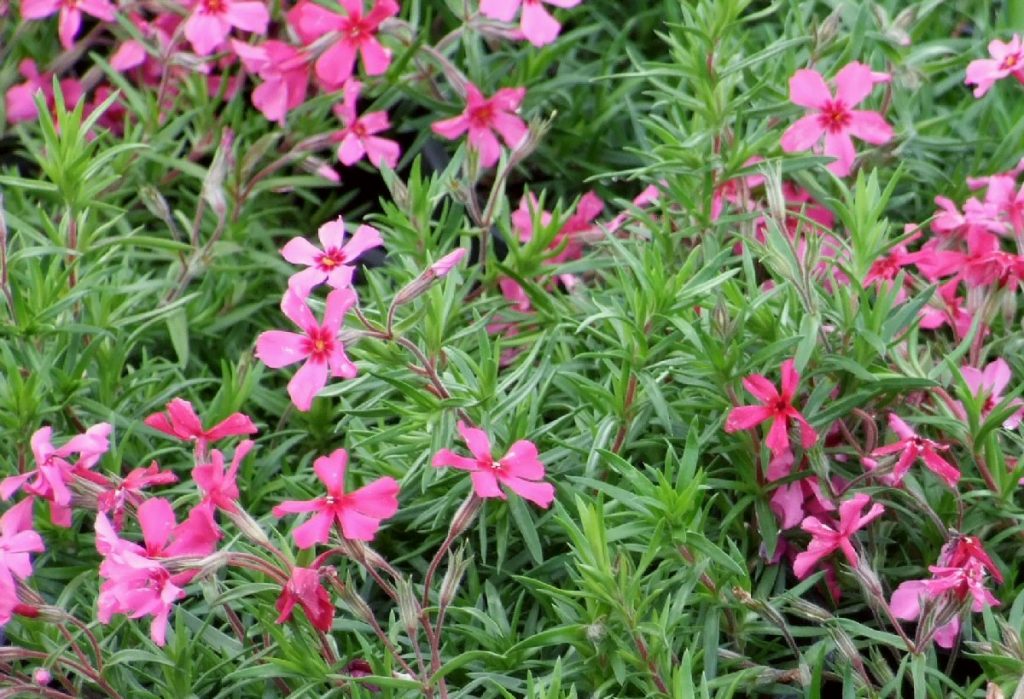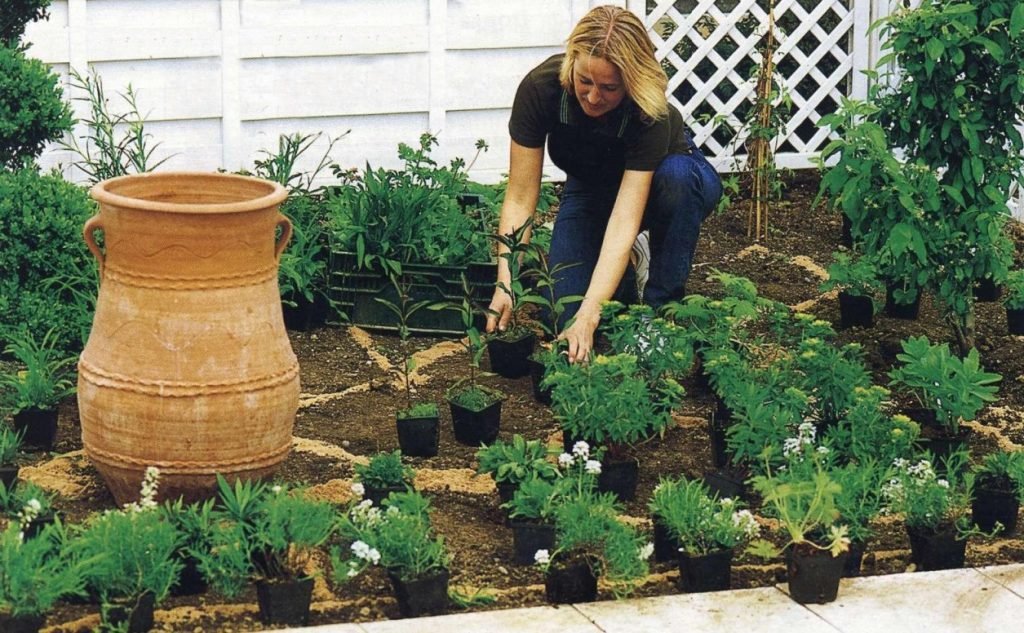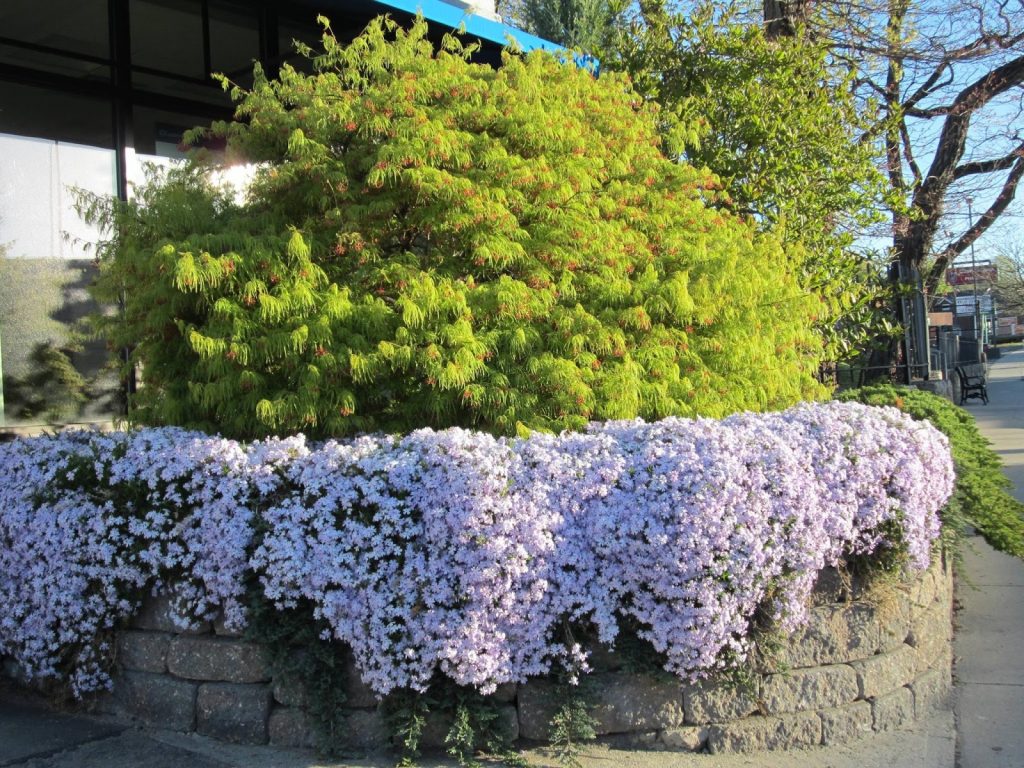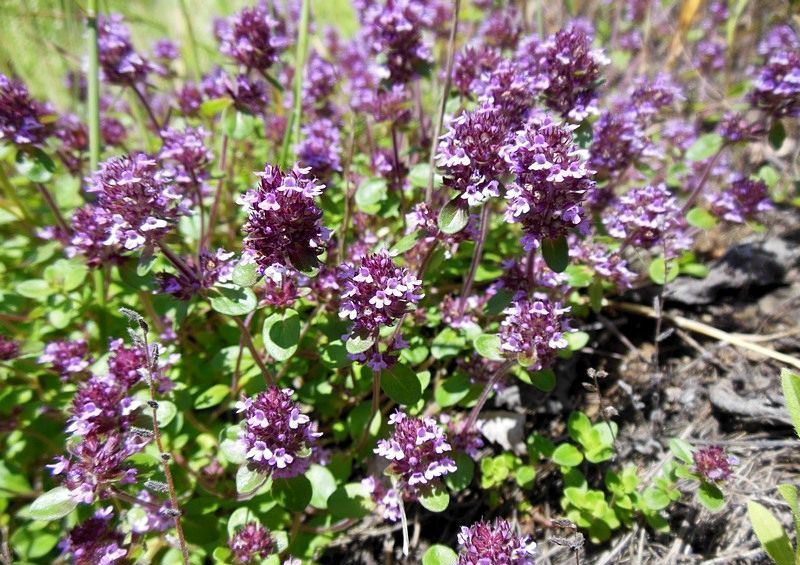Many growers say with confidence that phlox are among the most common types of flowers. Every gardener knows how to grow these beautiful flowers. But there are new varieties that are just beginning to win the attention of summer residents. One of them is subulate phlox.
Description of the variety and its characteristics
It is a perennial plant that spreads like a carpet on the soil surface. His homeland is the USA. The flower is also known as the moss carnation. The ease of planting and caring for phlox subulate determines the rapid spread of the plant in Russia.
The flower can reach a height of no more than 18 cm. A distinctive feature is that with the onset of cold weather, a green carpet of leaves remains to winter on the surface of the earth.
The stems are recumbent. They are covered with a lot of internodes. The length of narrow leaf blades does not exceed 2.5 cm. Inflorescences are formed at the end of each stem. The diameter of the flower ranges from 2 to 5 cm. Their colors can be varied: from white to purple. The flowering period begins in early spring and lasts up to 4 weeks. The possibility of repeated flowering of plants, which begins at the end of summer, is not excluded. Despite the fact that the secondary flowering is no longer so intense, the surface of the earth under the phlox is almost impossible to see.
Subulate phlox: planting and care in the open field, reproduction
When choosing a site for growing a plant, it is better to give preference to well-lit areas. The flower can also grow in partial shade, but in this case, its flowering will not be as intense.
Since phlox is not picky about the composition of the soil, the soil can be sandy with a low content of humus.
The area where phlox is supposed to be grown must be thoroughly cleaned of weeds. After the plant has grown, it will be quite difficult to do this. In addition, weeds will interfere with the growth of stems.
Some gardeners have a question: why, with proper care, the plants on the site do not grow well, do not bloom or die. It is not enough to properly care for phlox, you need to pay attention to their predecessors. It is better to plant plants in the area where calendula, lawn grasses, and marigolds grew before. Strawberries and garlic are bad precursors for flowers. This is due to the fact that these crops have low immunity to nematode infection.
There are several ways to propagate a plant. Among the most popular are the following:
- Seeds. Experienced gardeners recommend purchasing seed from specialized retail outlets. The seeds are sown directly on the soil surface and covered with a thin layer of earth. After 4 - 6 days, you can see the first shoots. After the first 3 to 4 true leaves are formed, young plants need to be transplanted. The distance between the bushes should be within 20 - 30 cm. This is due to the fact that the plant grows rapidly.
- By dividing the root. In this way, phlox reproduce after the end of the flowering period.The mother bush is dug up and divided into several parts. It should be noted that when dividing, each bush should have roots and at least 4 ground stems. This method of phlox breeding can be used no more than 1 time within 2 years.
- Cuttings. This breeding option is more difficult than the others, but more effective. To do this, several cuttings are cut from the mother plant and planted in containers with soil mixture. The rooting process lasts within 15 - 30 days. The air temperature in the room should not exceed 25 ° C. Otherwise, the possibility that the cuttings will begin to dry is not excluded. The hardened plants can be transplanted into the open ground to a permanent place in the fall.
The plant is extremely demanding for watering, especially in dry weather. It is better to water phloxes with settled warm water.
To increase the flowering intensity, experienced gardeners recommend cutting off flowers that have already faded. This simple procedure will increase the likelihood of phlox blooming again.
Despite the unpretentiousness in caring for phlox, you can not do without 5-time feeding. You can use the following fertilization scheme:
- spring - liquid manure;
- the beginning of summer is the same (you can add superphosphate);
- August - liquid manure;
- the beginning of autumn - phosphoric salt and potassium (this mixture is recommended to be applied in the evening).
Phlox subulate also responds well to feeding with wood ash. To do this, dilute 250 g of ash in 10 liters of water and boil. After the solution has cooled, it must be filtered, and then root and foliar feeding of the plants is carried out.
In early spring, plantings can be watered with humus. Thanks to this, it will be possible to accelerate the formation of green mass and growth of roots.
Despite the fact that the plants have a high index of frost resistance, the plantings need to be prepared for winter. For this, the flower bed is covered with spruce branches. This will prevent the plantings from getting stuck under a thick layer of snow. As a result, it is likely that the leaves will be pale in spring. After the snow melts, the phlox area can be opened.
The formation of plantings of subulate phlox occurs chaotically. If the stems begin to grow into another territory, they need to be cut or bent and directed in the right direction.
Just like other flowers, phloxes need to be protected from pests and diseases. Among the most common ailments that threaten these plants are the following:
- Powdery mildew. Refers to fungal diseases. It spreads mainly on the leaf blades of plants. When infested, flowers slow down their growth, leaves turn pale, and flowering is passive. To combat the disease, it is recommended to remove the topsoil and destroy all infected plants. Those phloxes that have not been affected by the disease must be treated with fungicides (phytosporin M, vectra, pure flowers). Before planting flowers in the open field, experienced gardeners recommend treating the soil with a weak solution of potassium permanganate. This will help kill most pathogens and harmful insect larvae. If these measures are not carried out in time, the possibility is not excluded that all plants may die.
- Rattle. Its causative agent is a virus of curly tobacco striping. When infected, the affected areas die. It is impossible to fight the disease. Plants affected by the disease are destroyed.
- Leafy curliness. The shape of the stem and leaves is deformed, becoming thin and fragile. The causative agent of the disease is the cucumber mosaic virus.
- Rust. The disease manifests itself in the form of brown spots that appear on the leaves and stems of plants. For the treatment of the disease, it is recommended to spray the bushes and the ground with drugs such as Bordeaux liquid, copper oxychloride, copper sulfate.The same funds are used for preventive purposes. If we neglect such simple measures, it is possible that all plantings of phlox will be lost.
Among the insects that plants are attacked are the following:
- Spider mite. When this insect appears on plants, their leaves quickly change color and become pale. In addition, brown spots appear on their surface. After a while, the affected leaves dry out. To combat spider mites, it is recommended to spray the plantings with insecticides (actellik, nissoran, skeleton).
- Nematodes. These hairy insects parasitize the tissues of phlox stems and leaves. Nematode larvae can also be found in the soil on the site. In the affected plant, the edges of the leaf blades become wavy, and the stems bend. For the destruction of nematodes, it is recommended to spray the plantings with fungicides.
- Slugs. They feed on plant sap. To destroy them, the plants themselves and the ground under them are sprinkled with wood ash or tobacco dust. Good results can be obtained by hand picking insects.
Subulate phlox are extremely beautiful and unpretentious plants. The area of their distribution is quite wide. Gardeners actively use them to decorate garden plots, flower beds, alpine slides. If phlox grows on the site, they will always delight the eye and give a good mood.















